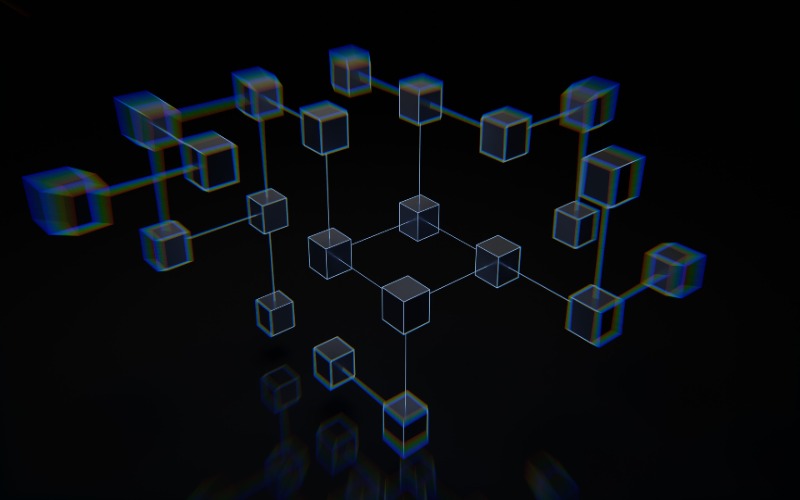Have you heard of Solana? When it comes to the blockchain market, it might be the case that you’ve only ever heard of Ethereum, but we posit that there is a dark horse in Solana. So, why is Solana going up? What does this mean for investors?
What Is Blockchain?
However, before we can understand Solana, we need to understand blockchain. Tech experts talk about “the” blockchain as though there is only one, the way we have “the” internet, but this isn’t the case. While Bitcoin was the first major blockchain developed, many other public and private blockchain networks exist today with different designs, features, and use cases. These include Ethereum, the most commonly used market leader, Polkadot, Cardano, and Solana.
A blockchain is essentially a database. It is distributed across a network of computers instead of a single location and is, importantly, decentralized due to this nature. A blockchain is a data structure block holding key transaction details, like date, time, and amount. Every time you make a transaction, you’re making up a block that will add to the chain, with each new block

referring back to previous blocks in a way that creates a secure, immutable data record.
This decentralized, transparent, and automated system enables security, accuracy, and permanence in recording everything from financial transactions to asset ledgers, credentials, records, and contracts in an open and trusted manner. It has disruptive potential across finance, supply chain, and healthcare industries.
What Is Solana?
As we mentioned, Solana is one such blockchain, and its position in cryptocurrency right now puts it in direct competition with the market leader: Ethereum. However, it has a lot of benefits over Ethereum and is therefore fighting for space in the market as a superior product. Ethereum has reason to worry- it has seen tremendous growth in 2022, even amidst the crypto winter, appreciating over 85% year-to-date while most other cryptos declined. Additionally, it’s in the top three most actively developed blockchain networks alongside Ethereum and Polkadot based on activity metrics. Over 400 projects have launched on Solana across DeFi, NFTs, and Web3 spaces. Areas like DeFi show dominance with over $1.2 billion total value locked.
Solana shows strong usage and developer momentum, pointing to a promising spot staking its claim among the future internet of blockchains. It is a highly scalable, open-source blockchain network that utilizes innovative technologies to achieve high throughput and low costs without sacrificing decentralization.
What Are the Benefits of Solana?
So, what makes Solana such a dark horse in the fintech industry? Solana is credited with being the core innovation for the “proof of history” method, which is a sequencing technique that cryptographically verifies the passage of time between events, greatly boosting efficiency. For comparison, Ethereum recently moved to Proof of Stake, which uses significantly less energy, allowing Solana to reach 50,000 transactions per second, orders of magnitude higher than networks like Bitcoin and Ethereum, and therefore costs, run well below $0.01 per transaction.
This speed is Solana’s best calling card. For users, Solana promises to enable fast, inexpensive decentralized applications – everything from DeFi to NFTs to Web3 networks built to scale to millions. It is also easy to build on, with familiar coding languages and SDK availability leading to rapid application development.
Additionally, Solana utilizes a sturdy underlying Proof of Stake consensus and communication architecture that brings resilient decentralized security to high throughput environments.
What Are the Key Innovations of Solana?
Another innovation of Solana is the Gulf Stream protocol, an innovative networking architecture Solana uses to enable massive transaction throughput. Before they are confirmed by validators and established early transaction orders, it enables the forwarding of transactions from node to node across Solana’s network. This is important because typical blockchains flood the network with unconfirmed transaction data, causing bottlenecks, whereas Gulf Stream prevents network overload.
What Does the Impact of Solana Mean for Investors?
The profile and adoption of Solana have been rising exponentially recently. As more decentralized apps choose to be built on Solana, investment in the ecosystem could ride a wave of growth.
Because Solana enables fast and scalable blockchain in areas like DeFi, NFTs, Web3 networks, and gaming, it offers cheap fees and extra speed. This makes these new apps much more viable at scale than on other chains like Ethereum, which brands and businesses around the world are likely to be interested in.
Increased real-world usage and speculative mania have led to massive price appreciation for Solana’s cryptocurrency SOL, from under $2 in 2020 to over $200 by November 2021. With faster transaction finality, higher throughput, and cheaper gas, Solana is facilitating more disruptive and user-friendly decentralized network models. This brings new early-stage investment opportunities.
What Is Solana’s Current Competitor?
Ethereum’s position as a competitor to Solana is as yet unchallenged. It is the market leader and, therefore, has a first-mover advantage and an enormous lead on developer ecosystem size and usage compared to Solana or any other layer 1 blockchain. For example, over 3,400 decentralized apps run on Ethereum today.
However, where Ethereum struggles with network congestion and high gas fees, Solana touts faster speeds, higher throughput capability, and significantly cheaper transactions – positioning itself as an “Ethereum Killer.”

